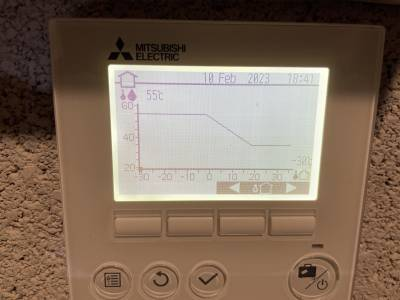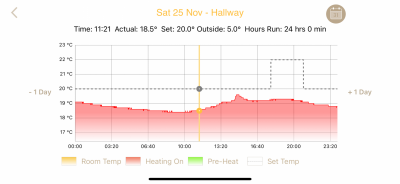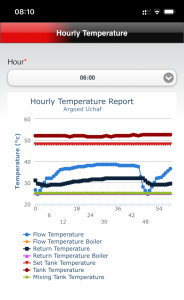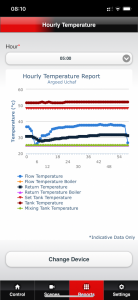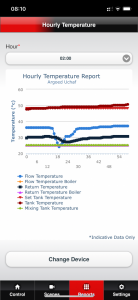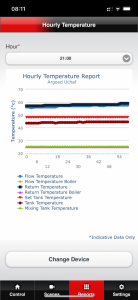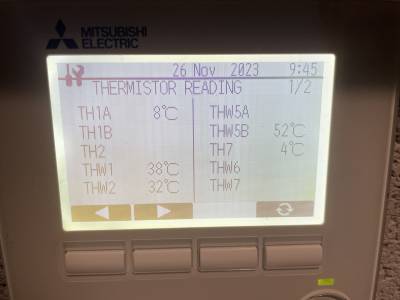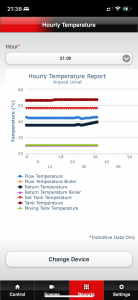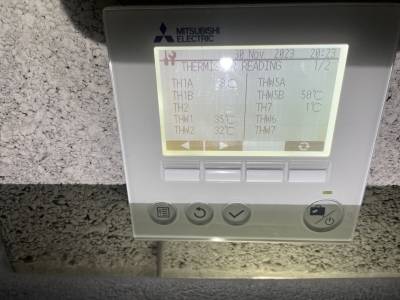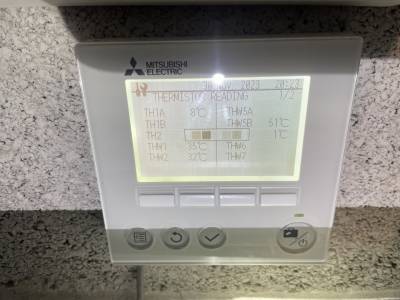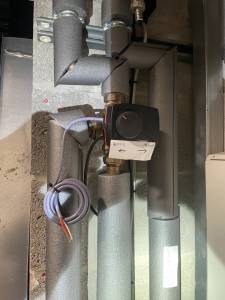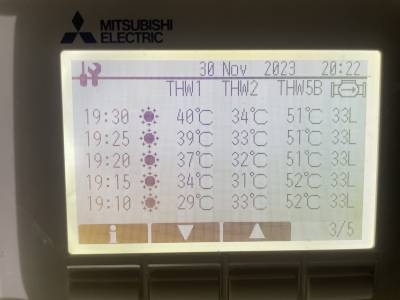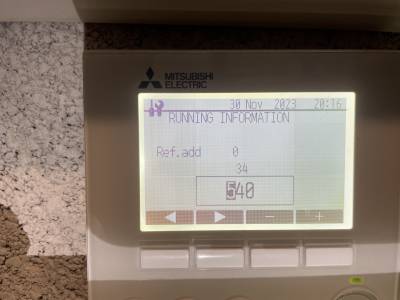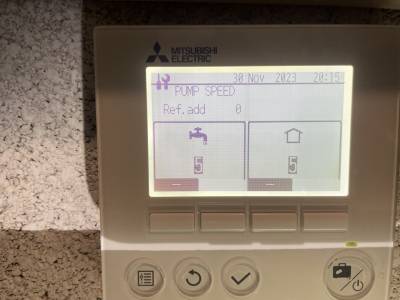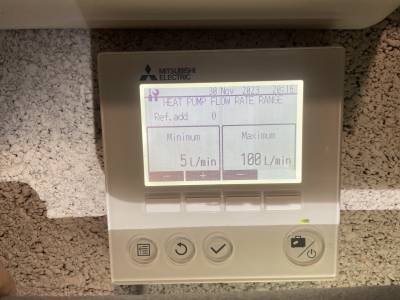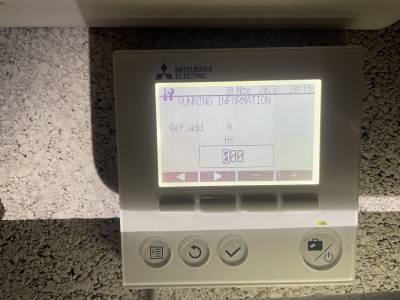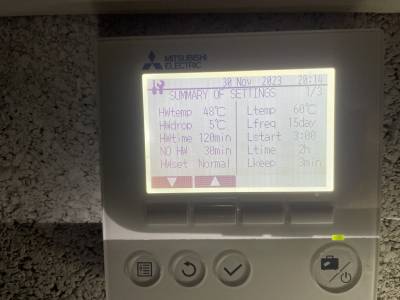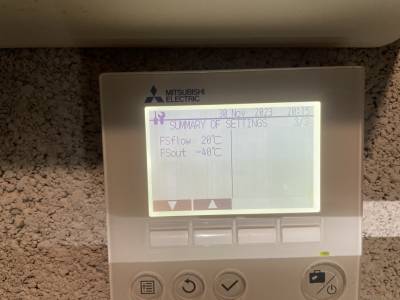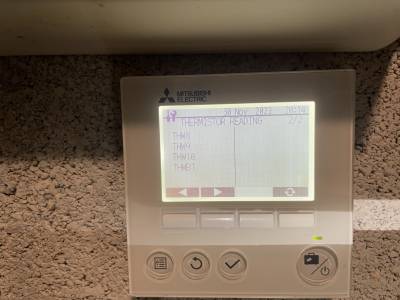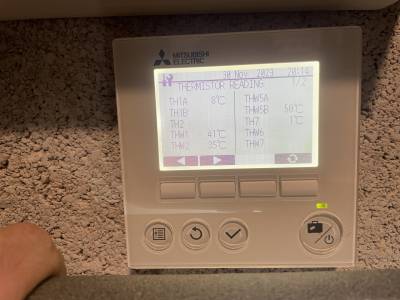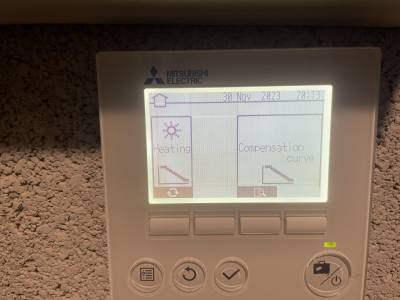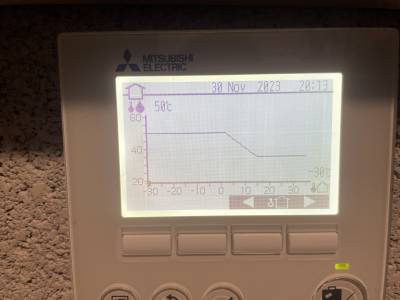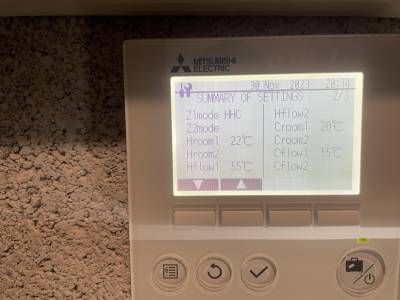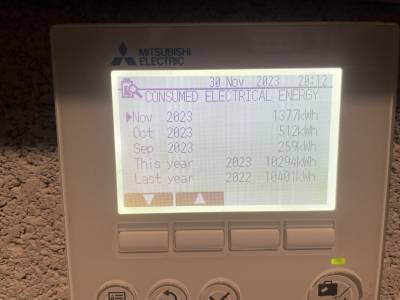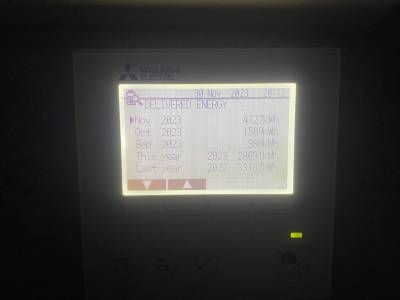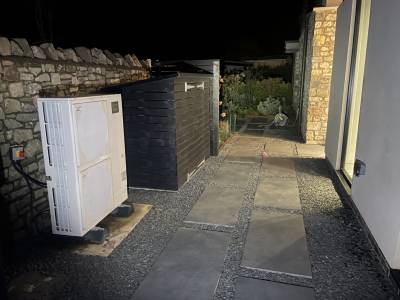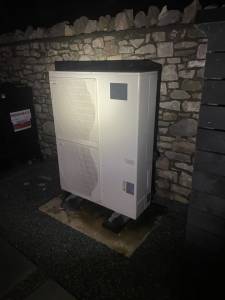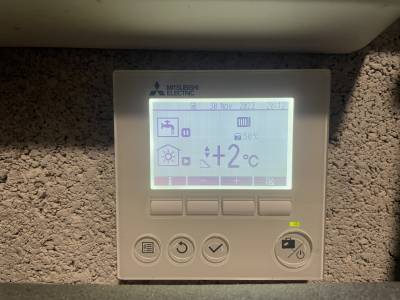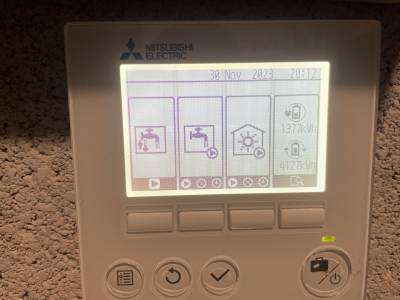Also the heating has never worked in the colder weather, but other issues were found which different engineers thought was the cause but still none have rectified the issue but have improved the hot water.
What confuses me is how can the ASHP achieve 60deg flow for hot water during the colder weather but as soon as it goes to heating it cant achieve the flow temp of say 45deg which is what's required to provide the necessary heat. Yet as soon as it OAT gets to 7/deg it achieves 45deg flow temp.
Posted by: @leftbacksAlso the heating has never worked in the colder weather, but other issues were found which different engineers thought was the cause but still none have rectified the issue but have improved the hot water.
What confuses me is how can the ASHP achieve 60deg flow for hot water during the colder weather but as soon as it goes to heating it cant achieve the flow temp of say 45deg which is what's required to provide the necessary heat. Yet as soon as it OAT gets to 7/deg it achieves 45deg flow temp.
ASHP's work by extracting thermal energy from the outside air, which contains more thermal during warmer weather conditions. At lower ambient air temperatures there is less thermal energy available for the heat pump to 'harvest' so it has to work harder, and requires more electrical energy.
At lower ambient temperatures the heat loss from your home increases, so a heat pump gets a double hit that gas or oil boilers don't suffer.
It is also necessary to understand the difference between temperature and thermal energy. It takes approximately 1.16W of energy to raise the temperature of 1 litre of water by 1C, so to heat your DHW from 10C to 50C would require approximately 14kWh of thermal energy.
Your home on the other hand, according to the heat loss calculation, should require approximately 12kWh of thermal energy to keep the Indoor Air Temperature (IAT) at the specified temperatures when the Outside Air Temperature (OAT) is at -1.6C. But this is for the each of the 24 hours of the day, so the total heat demand would be approximately 288kWh.
A 14W Ecodan heat pump should be able to supply that quantity of thermal energy, provided that the system has been correctly designed and installed.
Before I ask any further question could you state how 'technical' you are, so that I can decide what will be the most relevant ones.
Posted by: @leftbacks@harriup I am looking for any issues that may be causing the bigger issue of that the system doesn't work when outside temp drops to 7deg or below but is fine above that. I believe (although i am no expert) that the ASHP is not big enough to cope with the demand, this is why when it has to work harder for the demand it cant provide the flow temps. Trying to get an engineer or company who can diagnose such systems is proving very difficult, I have even had a Mitsubishi approved engineer visit with no success.
I am reading back through the previous posts since I deal with quite a number of forum member's problems and easily get confused. 🙄
To recap. Did you resolve the problem with the app indicating a fixed temperature of 14C at OAT's of 7C and below? Was it being caused by the FreezeStat function?
Posted by: @leftbacks@derek-m Thanks for the feedback, makes sense. I would say I am average technically but learning all the time with how involved I have got into this over the last 2 years.
I am now up to date with the previous posts. Do you have the MelCloud App and if so can you post some charts showing operation in both mild and colder weather conditions?
@derek-m I have uploaded an example of when its running in heating and hot water along with the graph from the heatmiser app showing it calling for heat all day and internal temperature dropping away and only climbing due to outside temperature rising. You will see on the Melcloud data that when in heating mode the low flow & return temps as to when its doing the hot water.
To my mind and limited knowledge if the ASHP is able to provide the required flow temps in normal conditions but not at colder periods surely this has to be that its not big enough? We have had two winters with it not working and really struggling to find the answer and at a point where I'm seriously considering removing and installing oil system as it costs me £2500 per month in electric for this to run constantly 24hrs a day whilst not doing anything.
I appreciate your frustration, but you have probably come to the right place to receive unbiased help and advice.
Did you check the setting of the FreezeStat Function? If you are not certain how to do this please lets us know.
Let's start with the heat pump location. Is it in an area with free flowing air, since the colder air coming out of the front needs to be discouraged from going around to the intake at the rear. What is the prevailing wind direction? It should not be blowing into the front of the heat pump otherwise it will be working against the fans.
It is obvious that your heat pump is producing thermal energy, so it would appear that it is either not producing sufficient, or that what it is producing is not being transferred to the heat emitters correctly. This is what we need to ascertain.
There are two screens for the Thermistor Readings, could you provide a photo of the second screen, and any other screens showing operating parameters.
Looking at the first screen provided, TH1A is the room temp., but this is your plant room where the display is located. You may wish to consider a wired or wireless remote room sensor, which could be used for the Auto Adaptation (AA) mode of control. But first let's see if we can discover the root cause of your 'lack of heating' problem.
THW1 is the temperature of the water coming out of your heat pump and into your home. THW2 is the temperature of the water going back to the heat pump for reheating. The difference between the two values is the DeltaT (DT), which at 6C would indicate that thermal energy is being supplied to your home.
THW5B is the temperature of the water in the lower section of your hot water cylinder.
TH7 is the ambient air temp.
The next thing to check is the inlet and outlet temperatures on the pipework at your buffer tank, and the speed of your 4 water pumps. Please provide a close-up photo of the controller for each of the pumps so that I can see which LED's are lit.
Once you feedback the above information we can decide what further checks may be necessary.
@derek-m Firstly thanks for your patience.
I recall checking something with the freeze stat, but as it was some time ago may be best to check again, if you could run this by me again on how to do this.
Heat Pump Location is at the side of the property with the recommended space around and is away from winds etc.
I have uploaded photos, hopefully this gives you the info required.
I uploaded a document on Sunday 26th in answer to your queries with the pump running info and various temperatures. I will upload again in separate reply
Hopefully this covers it?
Thanks for all the information.
I don't actually have an Ecodan, and I could not find a video showing how to access the relevant screen. According to the manual it is under:
Main Menu > Service > Operation settings > Freeze stat function > Flow T and Ambient. Maybe one of the experienced Ecodan owners on the forum could guide you.
Your WC curve would appear to be set to 50C LWT @ 2C OAT and below, sloping down to 35C LWT @ 15C OAT and above, with an offset of +2C. Is that correct?
I have the previous flow and temperature measurements, but of course they don't apply to the present operating conditions.
Based upon the data for 19:30, THW1 (LWT) is 40C, THW2 (RWT) is 34C, giving a DT of 6C. If the indicated flowrate of 33 lpm is correct, and if the system is filled merely with water, the heat pump thermal energy output would be of the order:-
DT 6C x 33 lpm x 60 (to get hourly value) x 1.16 (quantity of energy required to heat 1 litre of water by 1C).
This gives:- 6 x 33 x 60 x 1.16 = 13781 Wh or 13.781kWh.
If anti-freeze is present in the system then this value will be lower, dependent upon the concentration.
If the above calculation is correct, it would tend to indicate that your 14kW Ecodan is pushing out close to its maximum capacity, which in turn may mean that the original heat loss calculation may not have been that accurate.
As a test, try shutting down one of the UFH zones and record any changes in the data shown on the screens. Obviously don't leave the zone off for too long this weather.
Posted by: @derek-mWhen you have a reliable means of temperature measurement please repeat the test.
Obviously I cannot be 100% certain, but I suspect that your problem is due to the design of the system and the way it is being operated.
This is what I suspect is happening.
During milder weather conditions, the room thermostats will periodically operate some of the UFH solenoid valves, and run the corresponding water pump for that UFH manifold. This will draw warm water from the buffer tank at a rate dependent upon how many loops have operated and how many water pumps are running.
The main water pump will be feeding warm water from the heat pump into the buffer tank, at a rate greater than the flow coming out and going to the UFH loops.
As the outside air temperature (OAT) reduces, the heating demand will increase and more UFH loops will be activated, which in turn will increase the water flow rate from the buffer tank. I suspect that at an OAT of 9C and below, the flow rate being drawn by the three UFH water pumps becomes greater than the flow rate from the main water pump pushing water into the buffer tank. This would cause the temperature of the water being supplied to the UFH loops to reduce, rather than increase, because mixing is occurring within the buffer tank.
Before making any changes I would suggest repeating the temperature measurements during milder conditions and again when the OAT falls below 9C.
If my theory is proven to be correct then you could try the following. Reduce the speed of the three UFH manifold water pumps to their lowest setting and increase the speed of the main water pump to its highest setting.
I would also suggest that you check the specification of all the water pumps, since the main water pump is required to have a higher flow rate than the three UFH manifold pumps combined. If you are not certain how to check this then post close-up photo's of all the water pumps showing their model number.
My system is not UFH so my direct knowledge is zilch, but I think Derek is probably on the right lines. On the first of the MelCloud screenshots you posted the flow and return lines are pretty flat which might suggest a system in balance, but the flow temperature is several degrees above the return. This is as much of a difference as the heat pump can make (as I understand). When you run a HW cycle the flow temperature CAN rise right up to 60 because the return temp is gradually rising in line with the temperature of the tank, and so the flow temp continually builds on top. In your CH cycle the return is remaining low, but somehow not because it is passing heat into the slabs and warming your house, and the pump is working furiously - expensively – but not arriving at its goal.
The point of reference I can offer for comparison is that on my ecodan tank the primary pump is meant to be on its highest setting (its not, but that's another story) and the single secondary pump on its lowest setting in order to have a balanced flow across the low loss header. I know the pumps on your installation are probably different models (and the technical info on them is gobblegook to me) but with three secondary pumps on full power I can't see how your flows are going to function sympathetically with the primary.
Mitsubishi EcoDan 8.5 kW ASHP - radiators on a single loop
210l Mitsubishi solar tank
Solar thermal
3.94kW of PV
- 26 Forums
- 2,396 Topics
- 54.3 K Posts
- 285 Online
- 6,077 Members
Join Us!
Worth Watching
Latest Posts
-

RE: Setback savings - fact or fiction?
No need to create a new thread, @sheriff-fatman. You do...
By Majordennisbloodnok , 2 hours ago
-

RE: Power outages and storms: A surprisingly good DNO experience
Well done to Scottish Power for doing a good job. Well ...
By Majordennisbloodnok , 2 hours ago
-
RE: Advice for a novice on Mitsubishi Ecodan 6kW
Fair point. The highest frequency of defrosts I'd seen...
By Sheriff Fatman , 3 hours ago
-

RE: Heatpunk Floor plan issues
It's usually the complete opposite... seldom that Safar...
By Mars , 3 hours ago
-
RE: RDSAP10 effect on existing heat pump EPC rating?
@mike-patrick interesting update - thanks.I've been thr...
By Tim441 , 4 hours ago
-
RE: Recommended home battery inverters + regulatory matters - help requested
I remember reading in some inverters. They mandate a se...
By Batpred , 5 hours ago
-

RE: Fan is clipping ice build up from the front of unit.
@majordennisbloodnok I’ll not go there thanks! Toodles.
By Toodles , 6 hours ago
-

RE: Running from backup generaor in powercut?
@majordennisbloodnok Back in the 80’ or 90’ we had a te...
By Toodles , 6 hours ago
-
RE: Running my new Nibe ASHP efficiently
I'm new to the forum. Did you get a reply to this last ...
By Mike @ Camelot , 8 hours ago
-

RE: ASHP Energy Consumption: Aira 12kW heat pump
@grantmethestrength MCS requirements for DHW capacity h...
By Toodles , 8 hours ago
-
RE: New Mitsubishi Ecodan 11.2kW installation - L9 errors and maybe more
Great to hear! I just figured this out a day or tw...
By anotherdaveuk , 9 hours ago
-
RE: Help me keep the faith with my air source heat pump installation
@adamk I'm observing my own system at low temperatures ...
By dr_dongle , 14 hours ago
-

RE: Free Ecoheat Heat Pump Install
@deltona Yes older houses are problematic like that, bu...
By bontwoody , 1 day ago
-
RE: Radiator sizing sanity check
As I mentioned early on the cost of supplying and fitti...
By JamesPa , 2 days ago
-
RE: Electricity price predictions
Great point, one of the key ones in my chat with Octopu...
By Batpred , 2 days ago
-

RE: New Fogstar 15.5kWh upright solution
Let me point out that there are many Chinese suppliers ...
By Transparent , 2 days ago
-

RE: Weather compensation- why you should use it
@majordennisbloodnok — The Two Ronnies Mastermind sketc...
By cathodeRay , 2 days ago
-
Just realised that this image of the cylinder cupboard ...
By Sheriff Fatman , 2 days ago
-

RE: Rodents! A word of warning for heat pump owners
Two thoughts: 1: Let's ask @david-s if Primary Pro in...
By Transparent , 2 days ago
-
RE: Solis S6-EH1P8K-L-PLUS – Why I Chose It and What I’ve Learned So Far
In the diagram below, I describe my understanding of th...
By Batpred , 2 days ago

